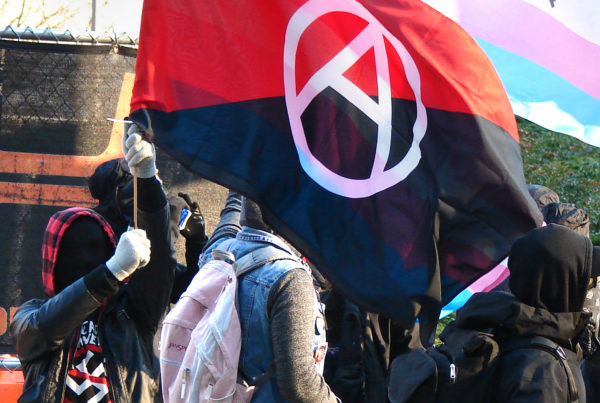Alternative Names:
Al Harakat Al Islamiyya (AHAI), Al Harakat-ul Al Islamiyya, Al-Harakatul-Islamia, Al Harakat Al Aslamiya, Abou Sayaf Armed Band (ASAB), Abu Sayaff Group, Abu Sayyef Group and Mujahideen Commando Freedom Fighters (MCFF).
Location:
ASG operates mainly in Basilan, Sulu and Tawi-Tawi provinces of the Philippines . Members occasionally travel to Manila.
Leadership:
The first leader was Janjalani, a Filipino Muslim who fought in the International Islamist Brigade in Afghanistan during the Soviet occupation. ASG suffered major losses in leadership in 2006 and 2007. In 2006, Janjalanji was killed in a clash with troops on Jolo Island and 2007 his successor, Sulaiman, was killed by Filipino troops. Both men were the two main contacts to Middle Eastern donors who provided funding.
Membership:
ASG is composed of loosely affiliated sub-groups, mostly organized along traditional clan and familial lines. Membership consists primarily of young Filipino Muslims from the Sulu archipelago, though the group also attracts poverty‑stricken Muslims from across the southern Philippines. At times, membership has included foreign jihadists. Numbers remain at approximately 400 fighters, however, membership numbers fluctuate in response to successful terrorist operations and pressure from the Philippine military. The response dictates the available resources and relative incentives of membership. No hierarchical structure has been observed in ASG’s membership
Funding Sources:
ASG views kidnap-for-ransom and extortion ventures as profitable operational tactics. These activities help support members’ livelihood and provide resources for ASG’s terrorist activities. ASG has also received funds from other Islamist terrorist organizations and enjoys support from elements of the local population of Jolo and Basilan.
Origins:
Abu Sayyaf means “bearer of the sword” but the ASG was formerly known as the Mujahideen Commando Freedom Fighters. The group split from the Moro National Liberation Front in the early 1990s. Despite three all-out war campaigns launched against the ASG, it has continued to remain in existence, growing to be not only a national security threat to the Philippines, but also a menace to civil society. Despite losses, its ranks have not decreased, rather they have increased.
Major Attacks:
April 4, 1991: Conducted a grenade attack in Zamboanga City, killing two U.S. evangelists (2 killed, unknown wounded).
August 24, 1991: Bombed a Christian missionary ship, M/V Doulos (2 Killed, 40 Wounded).
April 14, 1995: Attacked the town of Ipil, predominantly Christian population (53 killed, ~30 wounded).
April 23, 2000: First attack in Malaysia, kidnapping 21 people from a tourist resort in Sipadan. All were released or escaped (o killed, unknown wounded).
May 27, 2001: Kidnapped tourists from the Dos Palmas Resort in Palawan. ASG members took some of the hostages to a hospital in Lamitan. While attempting to take more hostages, Philippine troops sieges the hospital (0 killed, unknown Wounded).
March 4, 2003: Claimed responsibility for an explosion at the Davao International Airport (21 killed, 148 wounded).
February 27, 2004: Member of the Rajah Solaiman Movement (RSM) with close ties to the ASG detonated a bomb aboard a Superferry. ASG claimed responsibility which was later confirmed by the government. Known as the deadliest terrorist attack to take place in the Philippines and the world’s deadliest attack at sea (116 killed, unknown wounded).
February 14, 2005: Detonated three bombs in General Santos City, Davao City and Makati City in what became known as the Valentine’s Day Bombings (8 killed, 147 wounded).
November 13, 2007: A bomb outside the Philippine House of Representatives killed a congressman and two congressional employees (3 killed , 11 wounded).
December 5, 2011: Kidnapped a 53 year old Australian retired solider. Was released following an unconfirmed ransom payment.
June 16, 2015: Detonated an improvised explosive device in Basilan. After the explosion, which killed one soldier, ASG operatives ambushed the vehicle (1 killed, 8 wounded).
Late September, 2015: Kidnapped four individuals, including two Canadians, a Norwegian and a native Filipina (0 killed, 2 injured, on going).
Ideological Roots:
ASG relies on loose affiliations with like-minded groups or individuals. In addition, it has ties to Middle Eastern terrorist organizations. Most recently in 2014, ASG pledged allegiance to ISIL in a show of support for its disenfranchised young Muslim members. There are clear ties to Islamist terrorist organizations across the Middle East and South Asia, although they may not be as strong as they once were.
Objectives:
The precise aim of the ASG is the establishment of an autonomous Islamic state in the Southern Philippine island of Mindanao. Upon its establishment, the ASG’s objectives were to unify all sectors in the predominately Muslim provinces in the South and offered themselves as the only alternative to a genuine secessionist movement
Tactics:
The ASG currently engages in kidnappings for ransom, bombings, assassinations, and extortions. It uses terror for both financial profit and to promote their jihadist agenda. The group orders its members to kill, if necessary, all enemies who stand in the way of achieving their goal of establishing an autonomous Islamist state. They are known for the ruthless treatment of victims, effectively using the media and other modern communications technology to project themselves and their terror into civil society’s consciousness.
Updated November 12, 2015







